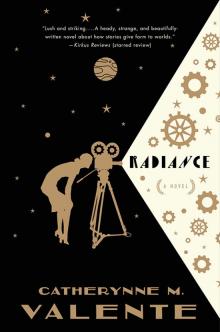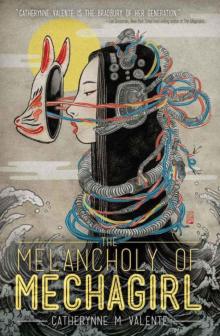


The Diary of Lady Murasaki, Page 3
Murasaki Shikibu
Representation of a typical Heian mansion (after Nihon emakimono zenshū, vol. 12)
boundary between outside and inside was fluid in the extreme, with a design of utmost flexibility. The one drawback was of course their vulnerability to the inclement weather. They must have been unbearably cold in winter with no protection from the wind and little to warm one but a small brazier. It is hardly surprising that these buildings burned down with depressing regularity.
The lack of a sense of boundary was reflected inside as well, where a ‘room’ might well consist of nothing more than a ‘tent’ of curtains. At busy times one’s room might even have to be set up in the corridor that skirted round the outside. Privacy in such an environment was impossible, especially as the space above the ‘room’ divisions must have been open to the roof, with all that meant for overhearing conversations. The floors were usually bare wood with the occasional mat. The modern Japanese tatami mat that covers the whole floor and ‘gives’ a little had not yet been invented. Furniture was minimal. By and large the interior of this large space must have been extremely dark, and the inhabitants for at least half the year had to wear many layers of clothing to keep warm. It is these clothes that became the subject of near-fetishistic concern with the ladies-in-waiting. Most of the women spent most of the time either sitting or kneeling on the floor, and their bed would be a thin mat simply rolled out. A man standing outside in the garden looking in, therefore, would have had the railings of the veranda at about mid-height and his eyes would have been roughly level with the skirts of the women inside.
It is clear from Murasaki’s diary that she was extremely interested in her surroundings. This may partly be a false impression produced by a desire to describe positions accurately for the sake of the record, but even so one cannot help being struck by the degree to which the author is aware of position and placing within this large residence. There are general links here, of course, to a cultural obsession with hierarchy and status, but it is of interest that the cardinal points of the compass are very clear in the mind of the writer. They help give a specificity to the descriptions. From one angle the fact that we need plans and drawings to understand what is going on in certain sections of the diary can be seen as a criticism. From another angle, however, it is truly remarkable that we can in fact create accurate plans on the basis of her record. If her aim was to practise building up a word-picture of a historical event in all its concreteness, the experiment must be judged a brilliant success.
DRESS
No one could fail to remark on the extent to which Murasaki concentrated on her descriptions of dress. The detail here too is at times almost suffocating. Clearly, concerns with colour combinations and types of fabric and weave were close to a fetish in court circles. This went beyond the usual concern with what might or might not be allowed: taste in clothes was obviously a major indicator of character and style, one of the ways in which a lady-in-waiting could make her mark and show her individuality. It is again difficult to gauge whether such detail was present simply because Murasaki wished to produce as close a record of an event as possible or whether she herself was obsessed with such details for other reasons. Be that as it may, it is important to have as clear a picture as possible as to what these dresses looked like. As the illustration indicates, we should not try to visualize the modern kimono with its tight, wide belt held high over the breasts. The clothing worn by Heian court women was much looser, much longer and in many more layers. There was a basic white undergarment and a pair of long trouser-skirts, nagabakama, usually red, which formed the basis for the following:
(i) A simple unlined dress (hitoe)
(ii) A set of lined robes of various colours and combinations (itsutsuginu or [kasane]uchigi)
(iii) A gown, often of crimson beaten silk (uchiginu)
(iv) A mantle (uwagi), the lining of which often protruded beyond the surface at the sleeve openings
(v) A train (mo)
(vi) A jacket (karaginu). For less formal occasions the train and jacket would be replaced by an informal outer robe (kouchigi).
The material used for uwagi, mo and karaginu was known as orimono (figured silk), a general term that seems to have included most of the Formal court attire for a Heian-lady-in-waiting
1 Trouser skirts (nagabakama)
2 Unlined dress (hitoe)
3 Lined robes (itsutsuginu or [kasane]uchigi)
4 Gown (uchiginu)
5 Mantle (uwagi)
6 Train (mo)
7 Jacket (karaginu)
heavy patterned silks such as brocade (nishiki), ribbed (kanhata), embroidered (nuimono), damask (aya) and taffeta (katori). Karaginu, however, if Murasaki’s diary is anything to go by, could sometimes be made of thin transparent gauze.
The lined robes were usually of very thin material, gauzes and gossamers, known by the generic term usumono. These robes were given most attention in descriptions because it was here that the colour combinations of outer material and inner lining came into play. As the upper layer was gauze, the colour of the lining shone through, producing a third composite colour, which was referred to by a single term, usually the name of a flower. Dark red shining through white produced ‘plum blossom’, and light purple beneath white produced ‘cherry blossom’, and so forth. It should be remembered that although the passages containing descriptions of women’s dresses are obviously of major importance to the author, the translation is often tentative: there is not always a consensus on the precise match of colours that some of these names represent, and even in the case of the base colours – such as ao-iro, suō or murasaki – it is impossible to reconstruct with any certainty exactly what shade they originally signified. On extremely formal occasions women often wore as many as five layers of these lined robes (kasaneuchigi), each with its own lining. Another meaning of the word kasane, then, is the combination produced by a whole series of layers that had sleeves of slightly differing lengths. It is this kind of combination which is the object of some criticism on p. 65. It would also seem from the descriptions in this diary that women were in the habit of adding false hems or cuffs on to the sleeves of their mantles and even their jackets in order to accentuate the main point of appreciation.
WOMEN’S TITLES
Most reference books, both Japanese and English, reproduce the definitions and regulations as laid down in the Yōrō Code of 718, but by Murasaki’s time much of this had lost its relevance, so that these lists are only of limited use when trying to reconstruct the system as it operated in the eleventh century; details must come from a study of contemporary historical and literary sources.2 The most important thing to keep in mind when reading the diary is that there are two distinct groups of women involved. In the Palace the dominant administrative unit for serving the Emperor for his personal needs was the Handmaid’s Office (Naishi no tsukasa), a sub-office of the Women’s Quarters (Kōkyū), with a full complement of attendants and maids. But as the importance of empresses and consorts increased in direct relation to the waxing of Fujiwara power, private households began to rival that of the Emperor. As Empress, Shōshi had a household staffed according to the regulations, but she also had a considerable entourage of women who did not have official court positions and who must have been paid for entirely from Fujiwara resources. Most of the women mentioned by Murasaki are of this type, as she was herself, and she clearly distinguished between the two groups. At one point, indeed, she suggests that she does not even know some of the ‘palace women’ by sight, let alone by name.
Exact details of these private households are hard to come by and probably differed from family to family, but the following outline may not be far from the mark in the case of Shōshi.
(i) three top posts: Envoy (senji), Mistress of the Wardrobe (mikushigedono) and Handmaid (naishi)
(ii) ladies-in-waiting (nyōbō), usually divided into Attendants (jijū) and Maids (nyokurōdo)
(iii) servants and menials (nyōkan).
Although all these t
erms stem from official titles, they signify rather different posts in the context of private households. There seems to have been, for example, only one naishi, Miya no Naishi, in this private system. All other women with this title in the diary are Palace women seconded to the service of Shōshi. From the description of the return to the Palace, it would seem that a number of posts were held by more than one woman. Miya no Senji was the Envoy, Lady Dainagon and Lady Saishō may both have been Mistress of the Wardrobe, and Miya no Naishi was a Handmaid. Lady Koshōshō was probably an Attendant, as we can presume was Murasaki herself.
The Author
Perhaps it is surprising that biographical details of a court lady-inwaiting born in Japan in the latter part of the tenth century are available at all, but this was no ordinary woman. Lady Murasaki is, of course, known as the author of the Genji monogatari, a work of fiction which is by common consent one of Japan’s greatest gifts to world culture. Nevertheless, sources for an account of her life are still somewhat meagre: the ‘diary’, a collection of short poems, and a few uncertain references in other historical records of the time. These sources have been thoroughly mined, one might say overmined, by generations of Japanese scholars in the attempt to flesh out the life and personality of this remarkable woman; and as the ‘diary’ covers only two years of her life, albeit two eventful years, it is the collection of poems to which biographers have constantly turned for help. But poetry collections, whether they are understood to be autobiographical or not, are false friends. Certainly, as we have seen, much Japanese court poetry was occasional in nature, and the habit of giving poems prefaces which explain the circumstances of their composition tends to give them a spurious air of reliability, but such is their conventional nature that any attempt to use them as historical record is fraught with difficulties. The standard Japanese biographies of Murasaki3 lean too heavily on these poems, which are often put to work in dubious contexts. It is for this reason that we must avoid using the poetry as a biographical tool except in extremis. The following account will therefore be of necessity somewhat bald.
Given the fact that close relatives were set against each other with monotonous regularity and that matters of rank were sacrosanct, it is only natural that Murasaki herself should feel that she had little in common with those in the higher echelons of the ruling Fujiwara clan, despite the fact that they shared a common ancestry. Her particular branch of the family had been coming down in the world for some time and was now on the very fringes of the establishment, filling posts such as provincial governorships, which gave ample opportunity for financial reward but alienated the holder from the tightly knit world of court and capital. The class is known by the generic term zuryō. Frequent visits to the provinces were regarded as onerous duties and indeed as a form of exile.
If Murasaki’s family were in no way powerful, it had reason to be proud of its literary lineage. Her great-grandfather Kanesuke (877–933) had been closely associated with Ki no Tsurayuki, the driving force behind the rehabilitation of Japanese native verse that led in 905 to the compilation of the first imperial anthology, the Kokinshū (‘A Collection of Poems Ancient and Modern’). He himself had fifty-seven poems chosen for various imperial anthologies thereafter. Her grandfather Masatada (910?–62) had also been close to Tsurayuki and had seven poems chosen for the Gosenshū (‘A Later Collection of Poems’, commissioned 951). Her father Tametoki continued the tradition of scholarship, but his main interests were in the Chinese classics and poetry in Chinese, and his chief claim to fame must be his role in the education of his daughter. All three of these men left personal poetry collections.4
Tametoki was dogged somewhat by ill luck and never rose very high in the court hierarchy. The first mention we have of him is as a boy in Tentoku 4 (960).3.29 at a poetry contest. From this we may deduce that he was born around 945. Soon after 960 he must have graduated as Master of Confucianism (Monjōshō), and the first part of his career seems to have been smooth. He became Junior Secretary Elect of Harima in 968 and served under Emperor Kazan, becoming Sixth Chamberlain and later Senior Secretary in the Ministry of Ceremonial (Shikibu no Daijō). This title is part of the origin of Murasaki’s name. When Kazan was forced to retire, Tametoki was left out in the cold and remained without an official post for the next ten years. Then in Chōtoku 2 (996).1.7 Emperor Ichijō appointed him Governor of Awaji, a very lowly post indeed. So indignant was he that for once in his life he asserted himself, addressing a memorial to the Emperor which included the lines: ‘Bitter study on winter nights brought blood-red tears to soak my sleeves; but in the spring morning on Appointments Day my hopes were high in the blue heavens.’ It appears that Ichijō may have been moved by the appeal, because Tametoki was given the more prestigious province of Echizen, whence he took Murasaki in 996.
All that is known about Tametoki’s stay in Echizen comes from a preface to one of his poems to be found in the collection Honchō reisō, which states that he met some of the seventy Chinese refugees who had landed in Wakasa the previous year and that he exchanged poems with them.
He returned to the capital around Chōhō 2 (1000), and was again without official post for some nine years. There are records of him taking part in numerous poetry competitions, however, so he was not entirely without friends nor entirely destitute. Then in Kankō 8 (1011).2.1 he was appointed Governor of Echigo. This time he took with him his son Nobunori, who fell ill and died there soon after his arrival. Suddenly in Chōwa 3 (1014).6.17 Tametoki abandoned his post and returned to the capital. Two years later in Chōwa 5 (1016).4.29 he retired to the temple at Miidera, where his third son, Jōsen,was a priest. His final rank was Senior Fifth Rank, Upper Grade. The last record we have is dated Kannin 2 (1018).1.21, where he is listed as being present at a banquet held by Regent Yorimichi; he must have died soon after, perhaps in 1020.
When was Murasaki herself born? This is a subject of lively debate, but 973 is generally accepted as being close to the mark. Our knowledge of her early years is extremely sketchy. The prefaces to poems 20–28 and 81–83 in the collection of her poetry suggest strongly that she accompanied her father to Echizen in the summer of 996, and she seems to have returned in 998 to marry Fujiwara no Nobutaka (950?–1001). Nobutaka was almost as old as her father and had a number of other wives – the mid-fourteenth-century genealogy Sonpi bunmyaku lists three women who bore him sons. He was in a somewhat similar position to her father and they had worked together under Emperor Kazan, but he had done rather better than Tametoki. From a passage in Sei Shōnagon’s Makura no sōshi (‘Pillow Book’)5 we know him to have been a flamboyant character, and a document dated Chōhō 1 (999).8.27 tells of serious disturbances caused by his high-handed methods as a provincial governor. Tradition has it that his marriage to Murasaki was a happy one; they had a daughter in 999, but he was carried away by an epidemic in Chōhō 3 (1001).4.25.
For the next four or five years Murasaki seems to have led a lonely widow’s existence, during which time she began the work of fiction that was to bring her fame and secure her a place at court. We do not know for sure but can assume that she began writing the Genji monogatari sometime in either 1002 or 1003, and had written a fair amount by the time she entered the service of Shōshi. It may well be that chapters were read at court and came to the notice of Michinaga, who decided that she would be an excellent addition to his daughter’s already impressive entourage.
When Murasaki actually arrived at court is not known. We know from her diary that she entered on ‘the twenty-ninth of the twelfth month’ (p. 44), but we do not know whether this refers to 1005 or 1006. Much of the evidence is circumstantial, but on Kankō 3 (1006).12.29 Fujiwara no Tokitaka, brother of her deceased husband Nobutaka, was allowed back into court after some misdemeanour, and on Kankō 4 (1007).1.13 her own brother Nobunori was promoted to Sixth Chamberlain. Michinaga may have been rewarding Murasaki on entry into service. This and some matters of internal consistency within the diary suggest that 1006 is the correct date.
It would seem from the diary that Murasaki had few specific duties to perform and acted as cultural companion-cum-tutor to Shōshi. Certainly she had time to record what was going on in some detail and could sit aside from those more active participants in various ceremonies as a kind of observer. It is possible that Michinaga asked her to record the events that constituted his finest hour – the birth of Atsuhira – although it could equally well be argued that women in her position were in the habit of recording such events anyway: the Eiga monogatari (‘A Tale of Flowering Fortunes’), an extended narrative covering the years 889–1028 and probably compiled by a court lady called Akazome Emon, would seem to be a patchwork quilt of such records. Murasaki seems not to have had an official court post, but was privately employed by Michinaga to serve his daughter. As we have already mentioned, her real name is unknown.














